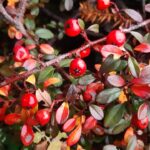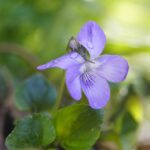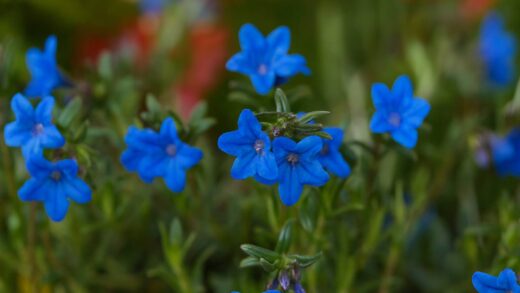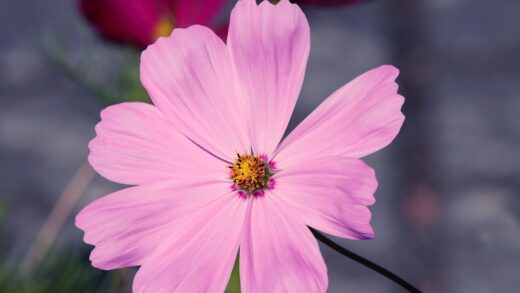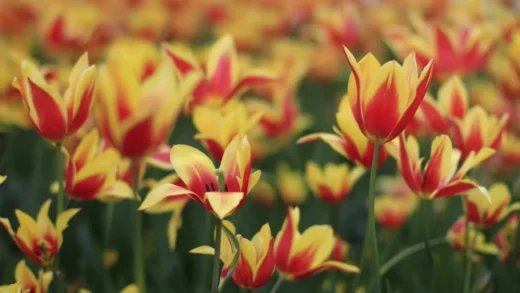The light requirements of the blue eryngo are simple, direct, and non-negotiable: it demands full, direct sunlight to truly thrive. This is not a plant that tolerates or appreciates partial shade; its entire physiology, from its growth habit to the intensity of its celebrated color, is intrinsically linked to maximum sun exposure. Originating in open, sun-drenched habitats such as coastal dunes, grasslands, and rocky slopes, its need for bright light is a deeply ingrained genetic trait. Fulfilling this requirement is the single most important factor, alongside good drainage, in cultivating a healthy, beautiful, and structurally sound specimen.
When deprived of adequate sunlight, the blue eryngo undergoes a series of undesirable changes. Its growth becomes etiolated, or “leggy,” as the stems stretch unnaturally in search of more light. This results in a weak, floppy plant that loses its iconic, strong architectural form and may require staking to remain upright. The visual appeal is significantly compromised, transforming the plant from a striking garden feature into a lanky, disorganized clump that fails to live up to its potential.
Furthermore, the intensity of the plant’s unique metallic blue coloration is directly proportional to the amount of ultraviolet (UV) light it receives. In a shady or partially shaded location, the flowers and bracts will often appear a muted, duller shade of blue-green or may even remain mostly green, lacking the electric vibrancy that makes the plant so sought after. To achieve the most brilliant and stunning display of color, a location that receives at least six to eight hours of unfiltered sunlight per day is absolutely essential.
Therefore, when selecting a site for blue eryngo, there can be no compromise on its light needs. It should be placed in the sunniest, most open part of the garden, far from the shade cast by trees, buildings, or taller perennials. A south-facing or west-facing aspect is typically ideal. By respecting this fundamental requirement, you provide the plant with the energy it needs to develop its robust structure, defend against disease, and produce the spectacular display of color that defines its character.
The importance of full sun exposure
Full sun exposure is the primary catalyst for all the desirable characteristics of the blue eryngo. The term “full sun” in horticulture is generally defined as receiving six or more hours of direct, unobstructed sunlight each day, and for this plant, more is always better. This high level of light energy fuels the process of photosynthesis, allowing the plant to produce the carbohydrates it needs to build strong stems, develop a deep and resilient root system, and generate an abundance of flowers. It is the fundamental energy source that drives the plant’s vigor and overall health.
More articles on this topic
The structural integrity of the blue eryngo is directly dependent on full sun. In bright light, the plant’s growth is compact and sturdy. The stems are thick and self-supporting, holding the intricate flower heads aloft with the strong, architectural posture for which the plant is famous. This robust structure is not just aesthetically pleasing; it also makes the plant more resilient to wind and rain. Without the energy derived from intense sunlight, the plant simply cannot build the strong cellular structures required to maintain this form.
Beyond structure, full sun plays a crucial role in the plant’s defense mechanisms. A plant that is photosynthesizing efficiently is a healthier plant, better equipped to resist pests and fungal diseases. Sunlight also helps to keep the foliage and the area around the plant’s crown dry, which is critical for preventing the onset of fungal issues like powdery mildew and, most importantly, rot. A shady, damp environment is the antithesis of the blue eryngo’s ideal habitat and invites the very problems the plant is naturally equipped to resist in sunny, airy conditions.
When considering a planting location, it is important to think about the sun’s path throughout the entire growing season. A spot that is sunny in the spring may become shaded by deciduous trees as they leaf out in the summer. The ideal location will have consistent, day-long sun from spring through autumn. This ensures the plant receives the energy it needs during all its critical growth phases, from initial emergence in the spring to peak flowering in the summer, resulting in a spectacular and healthy specimen.
Effects of insufficient light
Placing a blue eryngo in a location with insufficient light will have a predictable and uniformly negative impact on its health and appearance. The most immediate and noticeable effect is etiolation, the process where a plant grows elongated, weak stems in a desperate attempt to reach a light source. The stems will be thinner, paler, and significantly taller than they would be in full sun. This leggy growth completely undermines the plant’s desirable compact and architectural form, resulting in a plant that is likely to flop over, especially after rain or during windy conditions.
More articles on this topic
Inadequate sunlight also has a profound effect on flowering. A blue eryngo grown in partial shade will produce significantly fewer flowers than one grown in full sun. The plant simply does not have enough energy to invest in prolific bud production. The flowers that do develop will be smaller and less substantial. In very shady conditions, the plant may not flower at all, surviving only as a sparse clump of basal foliage. This completely defeats the primary purpose of growing this plant, which is for its unique and dramatic blooms.
The most disappointing consequence of insufficient light is the impact on color. The vibrant, metallic blue hue of the flowers and bracts is a direct response to high levels of sunlight, particularly UV radiation. In lower light conditions, this coloration fails to develop properly. The blooms will appear washed-out, often taking on a muted greenish or silvery tone that lacks the visual punch of a sun-grown specimen. The plant will lose its most distinctive and celebrated feature, becoming a pale imitation of its true potential.
Furthermore, a plant weakened by a lack of light is more susceptible to pests and diseases. The soft, stretched-out growth is more appealing to sap-sucking insects like aphids. The reduced air circulation and damp conditions often found in shadier spots also create a more favorable environment for fungal diseases such as powdery mildew and root rot. In essence, depriving a blue eryngo of the sun it craves weakens its structure, diminishes its beauty, and compromises its natural defenses.
Ideal sun exposure for optimal colour
To achieve the most intense and spectacular coloration that the blue eryngo is capable of, maximizing its exposure to sunlight is absolutely key. The signature steel-blue to violet-blue pigment in the plant’s bracts and stems develops most vibrantly when exposed to high-intensity light. This is why the same plant can look dramatically different depending on where it is situated in the garden. For the best possible color, a location that receives eight or more hours of direct sunlight per day is the gold standard.
The quality of the light is also a factor. The hot, direct sun of the afternoon, particularly from a south-facing or west-facing exposure, seems to be especially effective at bringing out the deepest blue hues. While the plant can grow with the minimum six hours of morning sun, the color may be slightly less intense than on a plant that is also bathed in the strong afternoon light. This is a fine point, but one that dedicated gardeners might consider when aiming for the most visually stunning display possible.
It is also worth noting that soil conditions can indirectly influence color, as they relate to sun exposure. Blue eryngo often shows its best color when grown in leaner, less fertile soil. Rich soil can force lush, leafy growth that might partially shade the developing flower heads, slightly reducing their light exposure and thus their color intensity. The combination of full, intense sun and lean, well-drained soil is the perfect recipe for achieving the most brilliant and captivating blue.
Interestingly, the color of the blooms can also intensify as they mature, provided they are in a sunny location. The flower heads often emerge with a greenish tint and gradually transition to their full blue glory as they develop and are exposed to more sunlight. This color transformation is one of the fascinating aspects of the plant. By providing the sunniest possible position, you are ensuring that the plant has the necessary trigger to complete this process and produce the dazzling, metallic display that makes it such a garden standout.
Adapting to different light conditions
While it is clear that full sun is the ideal, it is useful to understand how the blue eryngo might perform in slightly suboptimal light conditions and whether any adaptation is possible. It is important to state upfront that this plant will never thrive in deep or even moderate shade. However, if the only available spot receives slightly less than the six-hour minimum, such as a location with four to five hours of direct sun, you may still be able to grow the plant, but you must adjust your expectations accordingly.
In a situation with slightly reduced light, you will need to be extra vigilant about providing the other cultural conditions perfectly. The soil must have exceptionally sharp drainage, and you should be even more conservative with water and fertilizer, as a plant with less light will grow more slowly and use fewer resources. You may also need to provide some form of support, such as a pea-stick frame or a metal plant support, to prevent the inevitably weaker stems from flopping over.
Selecting a specific location that maximizes the available light is also crucial. For example, a spot that receives direct sun during the middle of the day, when the light is most intense, is preferable to one that only gets weaker morning or late evening sun. Planting near a reflective surface, such as a light-colored wall or paving, can also help to increase the total amount of light that reaches the plant. These small adjustments can help to mitigate the effects of a slightly less sunny position.
Ultimately, while some minor adaptation is possible, the blue eryngo is not a versatile plant when it comes to its light requirements. Attempting to grow it in significant shade will only lead to disappointment. If your garden is predominantly shady, it is far better to choose a different plant that is naturally adapted to those conditions. The beauty of the blue eryngo is so intrinsically tied to sunlight that providing it with anything less is a disservice to the plant and will prevent you from ever seeing it in its true, magnificent form.









